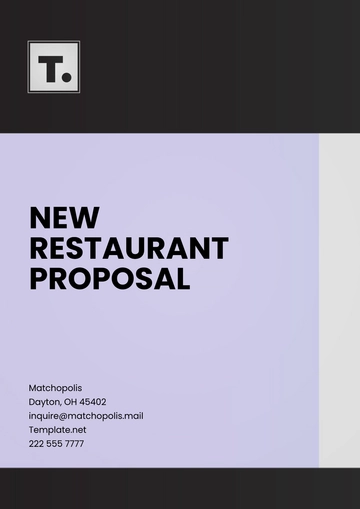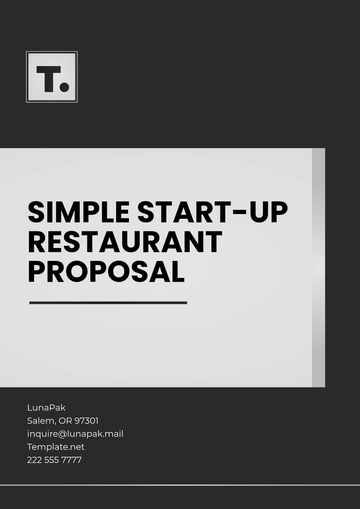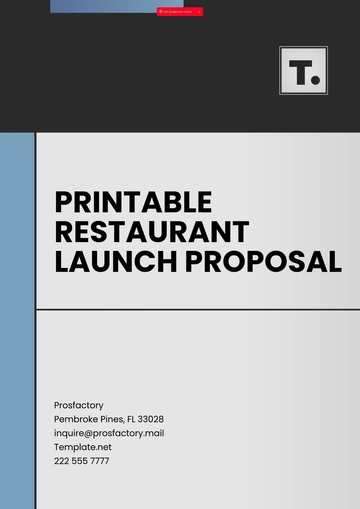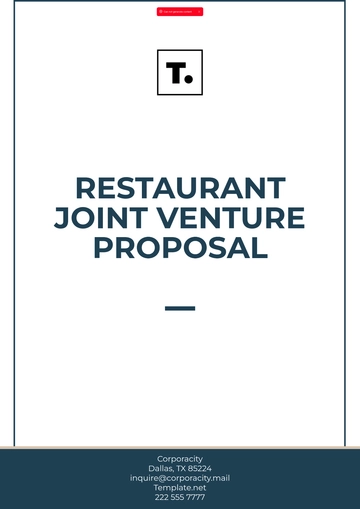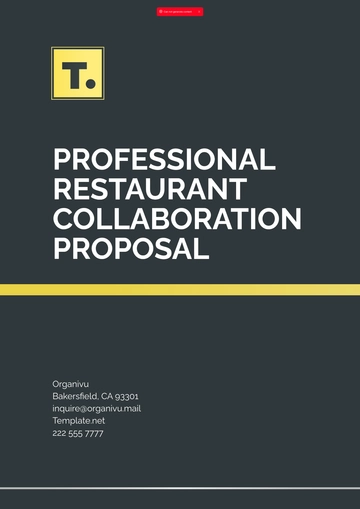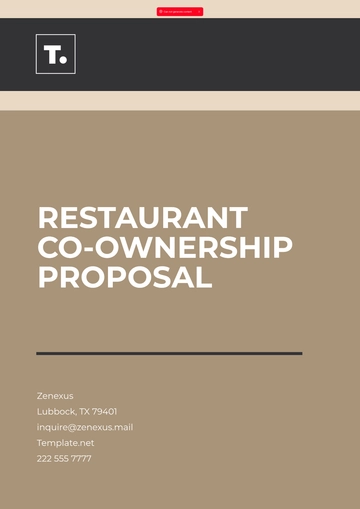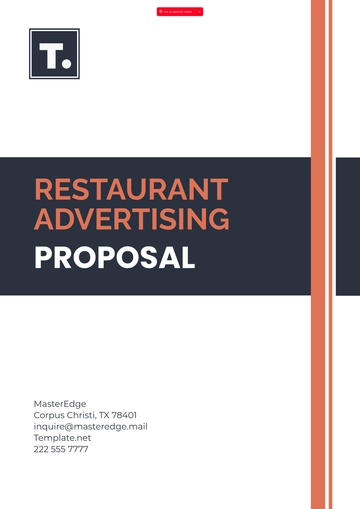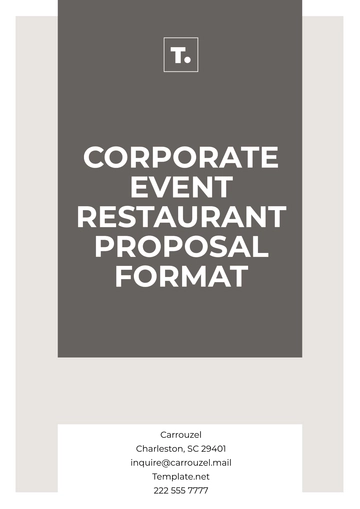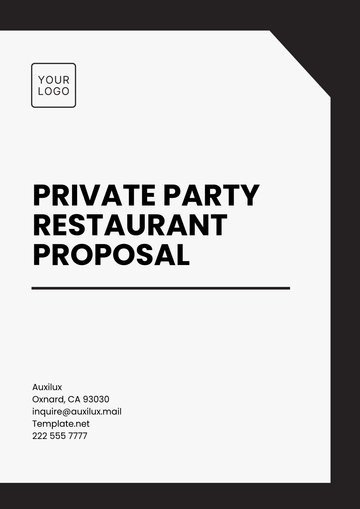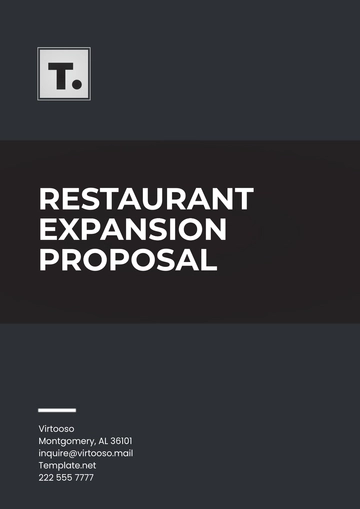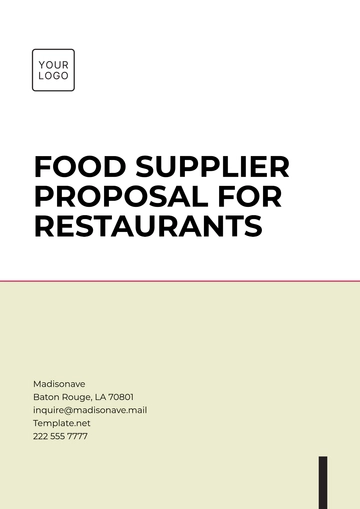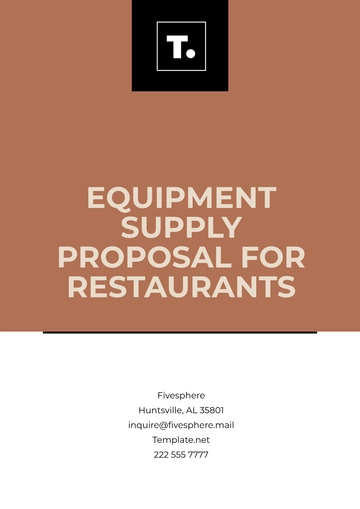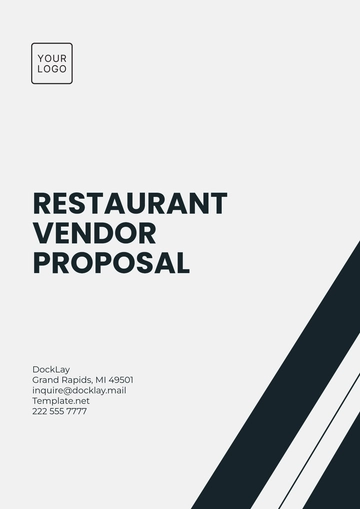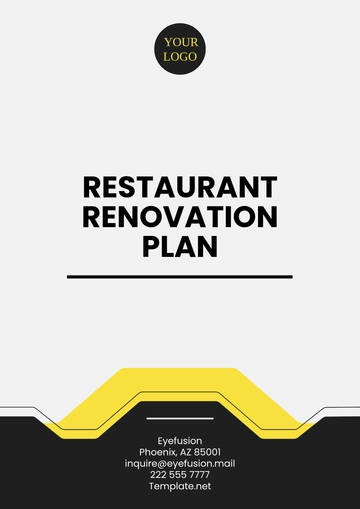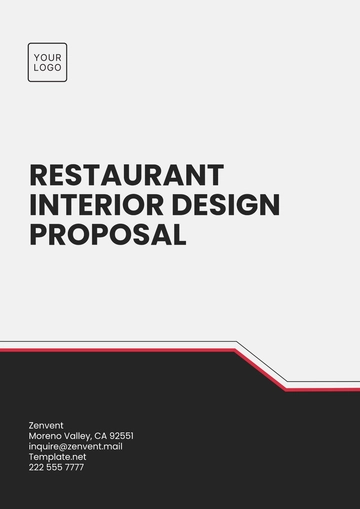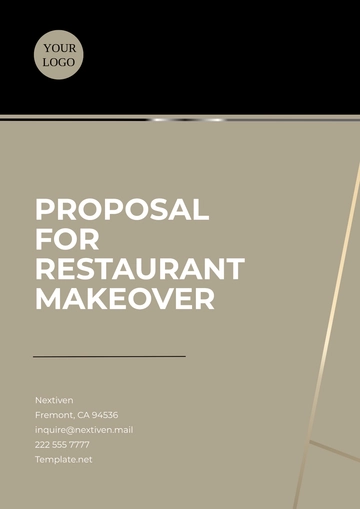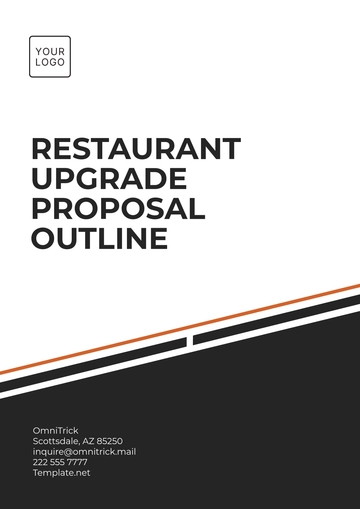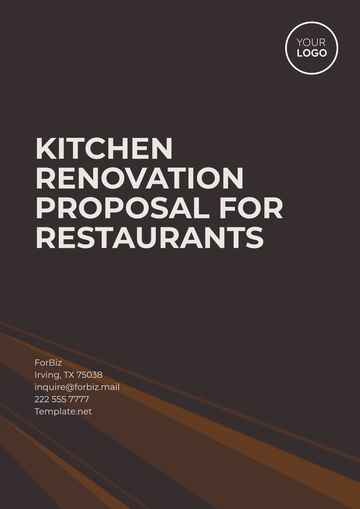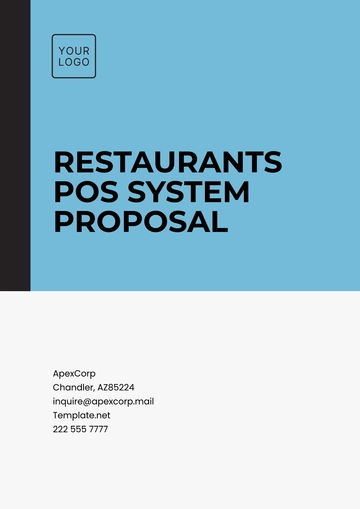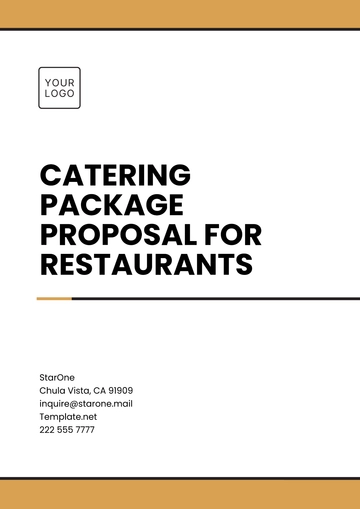Free Sample Small Restaurant Business Proposal
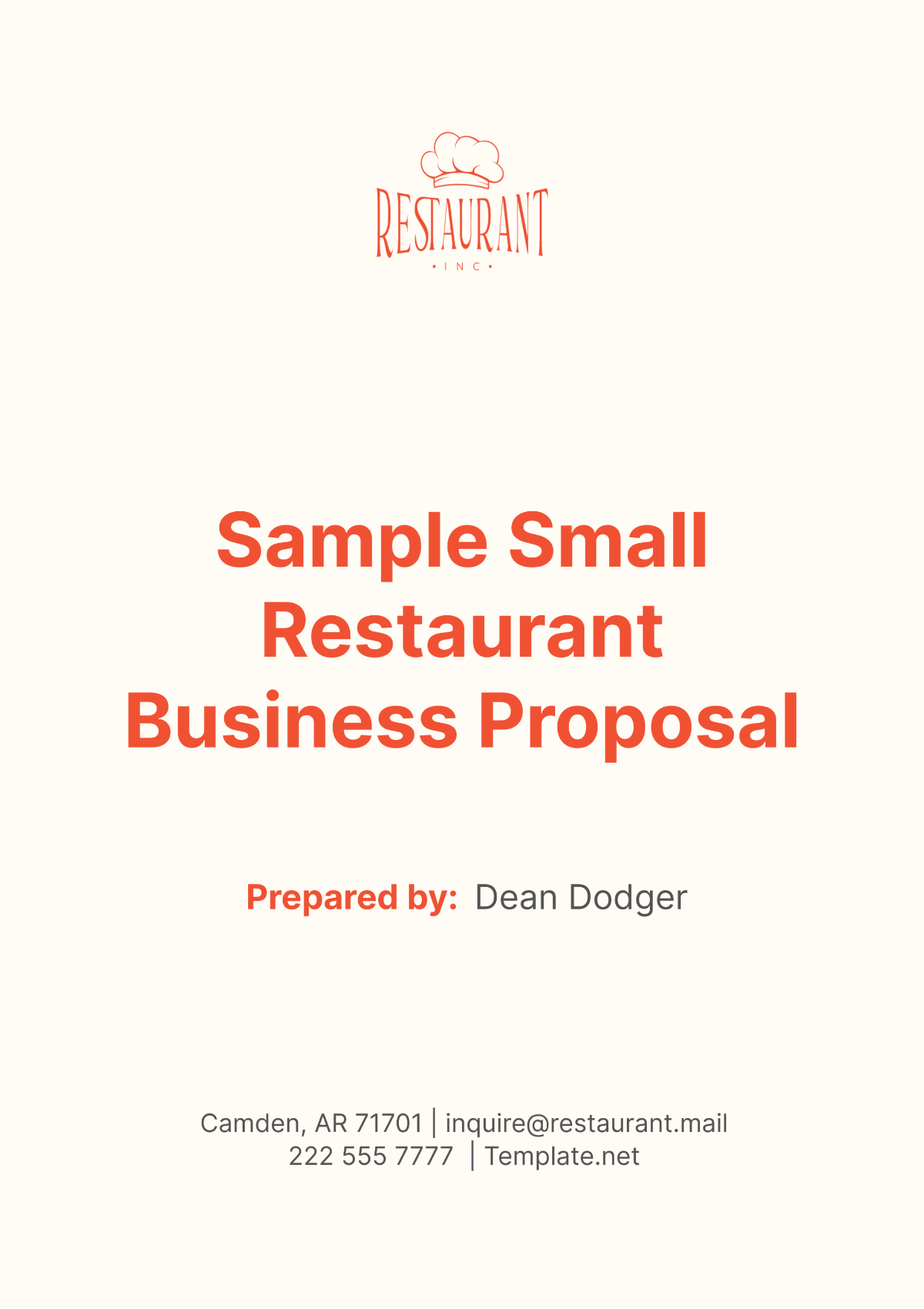
I. Executive Summary
[Your Company Name] aims to establish a unique dining experience in [Location] by offering high-quality [Cuisine Type] in a cozy and welcoming atmosphere. Our restaurant will focus on locally sourced ingredients and sustainable practices, catering to the growing demand for fresh and environmentally conscious dining options. With a team of experienced chefs and a commitment to exceptional service, we aim to become a beloved dining destination in the community.
II. Introduction
Welcome to [Your Company Name], where we combine culinary creativity with a passion for sustainability. Our restaurant will offer a diverse menu inspired by [Cuisine Type], showcasing the flavors of the region while prioritizing seasonal and organic ingredients. Whether guests are looking for a casual lunch, a romantic dinner, or a gathering with friends, [Your Company Name] will provide a memorable dining experience for all occasions.
III. Business Description
[Your Company Name] will be a full-service restaurant located in the heart of [Location]. Our restaurant will feature a warm and inviting ambiance, with rustic décor and comfortable seating arrangements. The menu will include a variety of appetizers, entrees, and desserts, with options available for vegetarians, vegans, and those with dietary restrictions. We will also offer a carefully curated selection of wines, beers, and craft cocktails to complement the dining experience.
IV. Market Analysis
Our target market includes residents of [Location], as well as tourists and visitors seeking authentic and sustainable dining experiences. The restaurant industry in [location] is vibrant and diverse, with a growing demand for farm-to-table restaurants and eco-friendly practices. By tapping into this market segment, [Your Company Name] aims to capture a loyal customer base and differentiate itself from competitors.
A. Target Market:
Our target market encompasses residents of [Location] as well as tourists and visitors seeking authentic and sustainable dining experiences. Demographically, our target customers include urban professionals, families, and food enthusiasts aged 25-55. We aim to appeal to individuals who prioritize quality, freshness, and ethical sourcing in their dining choices.
B. Industry Overview:
The restaurant industry in [Location] is robust and diverse, reflecting the city's rich culinary landscape. With a plethora of dining options ranging from fast-casual eateries to fine dining establishments, the market offers ample opportunities for innovation and differentiation. Recent trends indicate a growing demand for farm-to-table restaurants that prioritize locally sourced ingredients, as well as establishments that embrace sustainable practices.
C. Competitor Analysis:
Our competitive landscape includes a mix of independent eateries, chain restaurants, and specialty food establishments. While some competitors may offer similar cuisine, [Your Company Name] will distinguish itself through its focus on sustainability, quality, and community engagement. We have identified several key competitors, each with its unique strengths and weaknesses:
[Competitor 1]: Known for its [Specific Cuisine], [Competitor 1] has built a loyal customer base through its authentic flavors and cultural experience. However, it lacks a strong emphasis on sustainability and may not appeal to environmentally conscious diners.
[Competitor 2]: A popular chain restaurant, [Competitor 2] offers a wide variety of menu options at affordable prices. While it attracts a large customer base, it may struggle to maintain the quality and freshness of ingredients compared to smaller, independent establishments.
[Competitor 3]: A farm-to-table restaurant, [Competitor 3] prides itself on sourcing ingredients from local farmers and producers. While it shares our commitment to sustainability, it may cater to a niche market and face challenges in scaling its operations.
D. Market Trends:
Several market trends are shaping consumer preferences and behavior in the restaurant industry:
Demand for Sustainability: Increasing awareness of environmental issues has led to a growing demand for sustainable dining options. Consumers are increasingly seeking restaurants that prioritize eco-friendly practices, such as locally sourced ingredients, waste reduction, and energy conservation.
Focus on Health and Wellness: With a greater emphasis on health and wellness, consumers are gravitating towards restaurants that offer nutritious and wholesome menu options. There is a rising demand for plant-based and gluten-free alternatives, as well as transparent labeling of ingredients.
Preference for Authentic Experiences: Authenticity is a key driver of consumer choice, with diners seeking out restaurants that offer unique culinary experiences and flavors. Immersive dining experiences, such as chef-driven tasting menus and themed pop-up events, are gaining popularity among adventurous food enthusiasts.
V. Marketing Strategy
[Your Company Name] will develop a compelling brand identity that resonates with our target market and communicates our values of quality, sustainability, and community. Our branding efforts will focus on creating a cohesive visual identity, including logo design, color palette, and brand messaging. We will ensure consistency across all touchpoints, from signage and menus to digital platforms and social media profiles.
Promotion: To generate awareness and attract customers, [Your Company Name] will implement a multifaceted promotion strategy that leverages both traditional and digital marketing channels. Our promotional efforts will include:
Social Media Marketing: We will maintain an active presence on popular social media platforms such as Instagram, Facebook, and Twitter to engage with our audience, showcase our culinary offerings, and share behind-the-scenes glimpses of our restaurant.
Local Advertising: We will invest in targeted local advertising campaigns, including print ads in neighborhood publications, radio spots, and outdoor signage, to reach potential customers within our geographic vicinity.
Community Engagement: [Your Company Name] will actively participate in community events, festivals, and charity fundraisers to foster goodwill and strengthen our ties with the local community. We will sponsor and host events that align with our brand values, such as farm-to-table dinners, cooking workshops, and sustainability initiatives.
Online Presence: We will optimize our online presence through search engine optimization (SEO) techniques, ensuring that our website ranks prominently in search engine results for relevant keywords. We will also actively manage online review platforms such as Yelp, Google My Business, and TripAdvisor to monitor and respond to customer feedback effectively.
Partnerships: Collaborations with local farmers, producers, and artisans will be integral to [Your Company Name]'s marketing strategy. By forging strategic partnerships with suppliers who share our commitment to sustainability and quality, we will not only ensure a reliable source of fresh ingredients but also enhance our brand credibility and appeal. We will feature our partners prominently on our menu, website, and marketing materials, highlighting their contributions to our culinary offerings.
Loyalty Program: To incentivize repeat business and cultivate customer loyalty, [Your Company Name] will implement a tiered loyalty program that rewards customers for their patronage. Members will earn points for every dollar spent, which can be redeemed for discounts, complimentary items, or exclusive experiences. Additionally, we will offer special perks and privileges to our most loyal customers, such as birthday rewards, early access to new menu items, and invitations to VIP events.
VI. Operational Plan
Location: [Your Company Name] will be strategically located in [Location], a vibrant and bustling area known for its diverse culinary scene and high foot traffic. The chosen location offers excellent visibility, accessibility, and proximity to our target market, ensuring maximum exposure and convenience for our customers. We have secured a lease agreement for a prime storefront space with ample seating capacity, desirable amenities, and favorable terms.
Menu Development: Our culinary team, led by Executive Chef [Name], will curate a menu that showcases the best of [type of cuisine] cuisine while incorporating seasonal and locally sourced ingredients. Drawing inspiration from traditional recipes and culinary techniques, we will offer a diverse selection of appetizers, entrees, and desserts that cater to a range of palates and dietary preferences. Our menu will feature signature dishes that highlight the unique flavors and ingredients of the region, as well as rotating specials that showcase seasonal offerings and culinary creativity.
Staffing: At [Your Company Name], we recognize that our employees are our greatest asset, and we are committed to creating a positive and supportive work environment that fosters growth, creativity, and teamwork. We will assemble a dedicated team of skilled professionals, including chefs, cooks, servers, bartenders, and support staff, who share our passion for hospitality and dedication to excellence. Our hiring process will prioritize candidates with relevant experience, strong work ethic, and a genuine enthusiasm for delivering exceptional service. Ongoing training and development programs will ensure that our staff is equipped with the knowledge, skills, and confidence to exceed customer expectations and uphold our standards of quality and professionalism.
Sustainability Practices: [Your Company Name] is committed to minimizing our environmental footprint and promoting sustainability throughout our operations. We will implement a variety of eco-friendly practices and initiatives, including:
Sourcing: We will prioritize locally sourced ingredients from farmers, producers, and suppliers who adhere to sustainable farming practices and ethical standards.
Waste Reduction: We will implement waste reduction measures such as composting, recycling, and responsible food waste management to minimize landfill contributions and conserve resources.
Energy Efficiency: We will invest in energy-efficient appliances, lighting, and HVAC systems to reduce energy consumption and lower our carbon footprint.
Packaging: We will use eco-friendly packaging materials and explore alternatives to single-use plastics to minimize environmental impact and promote waste reduction.
Community Engagement: We will actively engage with the local community and participate in sustainability initiatives, events, and partnerships to raise awareness and promote positive environmental stewardship.
VII. Start-Up Costs
In the following table, we outline the financial projections and start-up costs for our restaurant, providing a comprehensive overview of our financial plan to ensure the success and viability of our venture.
Start-Up Costs | Amount ($) |
|---|---|
Leasehold Improvements | 50,000 |
Equipment Purchases | 30,000 |
Inventory | 20,000 |
Marketing Expenses | 10,000 |
Operating Capital | 40,000 |
Total Start-up Costs | 150,000 |
VIII. Revenue Projections
These projections are based on market research, anticipated customer traffic, and pricing strategy. As we establish our presence in the community and build a loyal customer base, we expect to see steady revenue growth over the next three years.
Year | Revenue ($) |
|---|---|
Year 1 | 300,000 |
Year 2 | 500,000 |
Year 3 | 700,000 |
IX. Operating Expenses (Monthly)
Below are the projected monthly operating expenses for [Your Company Name] restaurant:
Expense | Amount ($) |
|---|---|
Rent | 5,000 |
Utilities | 1,000 |
Payroll | 15,000 |
Food Costs | 10,000 |
Marketing Expenses | 2,000 |
Total Operating Expenses | 33,000 |
X. Financing
We are seeking funding through a combination of personal investment, bank loans, and potential investors. Our financial projections indicate steady revenue growth, ensuring the viability and profitability of [Your Company Name] restaurant.
XI. Conclusion
In conclusion, [Your Company Name] restaurant presents a compelling vision for a culinary destination that combines innovative cuisine with a commitment to sustainability and community. With a strategic location, a diverse menu featuring locally sourced ingredients, and a dedicated team of professionals, we are poised for success in the competitive restaurant industry. Our comprehensive business proposal outlines a clear roadmap for achieving our goals, from branding and marketing strategies to operational plans and financial projections. We are confident that with our passion, expertise, and focus on delivering exceptional dining experiences, [Your Company Name] will emerge as a beloved establishment in [location], contributing to the vibrancy and culinary landscape of the community. Thank you for considering our proposal, and we look forward to the opportunity to bring our vision to life.
- 100% Customizable, free editor
- Access 1 Million+ Templates, photo’s & graphics
- Download or share as a template
- Click and replace photos, graphics, text, backgrounds
- Resize, crop, AI write & more
- Access advanced editor
Drive success with Template.net's Sample Small Restaurant Business Proposal Template. Editable in our AI Editor Tool, this customizable template ensures professionalism and clarity in your proposal. Crafted for impact and feasibility, it outlines your restaurant concept, market analysis, financial projections, and marketing strategies. Elevate your chances of securing funding and support with our template.
You may also like
- Business Proposal
- Research Proposal
- Proposal Request
- Project Proposal
- Grant Proposal
- Photography Proposal
- Job Proposal
- Budget Proposal
- Marketing Proposal
- Branding Proposal
- Advertising Proposal
- Sales Proposal
- Startup Proposal
- Event Proposal
- Creative Proposal
- Restaurant Proposal
- Blank Proposal
- One Page Proposal
- Proposal Report
- IT Proposal
- Non Profit Proposal
- Training Proposal
- Construction Proposal
- School Proposal
- Cleaning Proposal
- Contract Proposal
- HR Proposal
- Travel Agency Proposal
- Small Business Proposal
- Investment Proposal
- Bid Proposal
- Retail Business Proposal
- Sponsorship Proposal
- Academic Proposal
- Partnership Proposal
- Work Proposal
- Agency Proposal
- University Proposal
- Accounting Proposal
- Real Estate Proposal
- Hotel Proposal
- Product Proposal
- Advertising Agency Proposal
- Development Proposal
- Loan Proposal
- Website Proposal
- Nursing Home Proposal
- Financial Proposal
- Salon Proposal
- Freelancer Proposal
- Funding Proposal
- Work from Home Proposal
- Company Proposal
- Consulting Proposal
- Educational Proposal
- Construction Bid Proposal
- Interior Design Proposal
- New Product Proposal
- Sports Proposal
- Corporate Proposal
- Food Proposal
- Property Proposal
- Maintenance Proposal
- Purchase Proposal
- Rental Proposal
- Recruitment Proposal
- Social Media Proposal
- Travel Proposal
- Trip Proposal
- Software Proposal
- Conference Proposal
- Graphic Design Proposal
- Law Firm Proposal
- Medical Proposal
- Music Proposal
- Pricing Proposal
- SEO Proposal
- Strategy Proposal
- Technical Proposal
- Coaching Proposal
- Ecommerce Proposal
- Fundraising Proposal
- Landscaping Proposal
- Charity Proposal
- Contractor Proposal
- Exhibition Proposal
- Art Proposal
- Mobile Proposal
- Equipment Proposal
- Student Proposal
- Engineering Proposal
- Business Proposal


